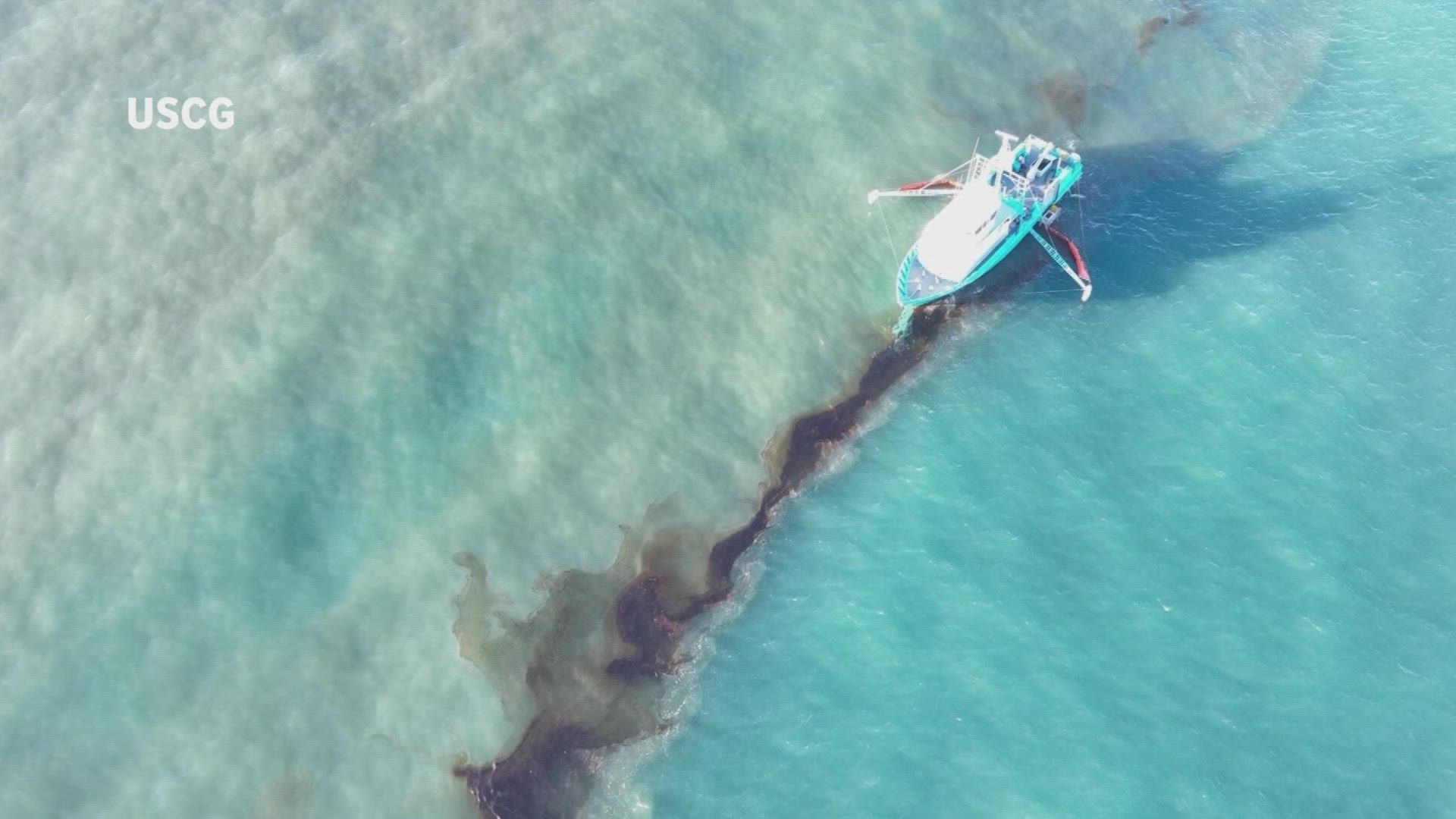NEW ORLEANS — Authorities still don't know what caused the Main Pass Oil Gathering pipeline on the floor of the Gulf of Mexico to lose 1.1 million gallons of oil, or even where the leak began along a 66-mile stretch of pipeline last Thursday.
A Unified Command of federal and Louisiana spill-response agencies reported some good news at a press conference Tuesday morning at the U.S. Interior Department offices in Elmwood -- including that an oil slick that satellites showed on Thursday stretching for more than 30 miles and within 20 miles of the bird’s foot Mississippi River delta, had now dissipated and drifted 50 miles south of the delicate shoreline marsh.
But a key part of the incident command team, pipeline owner Third Coast, was absent from the briefing, leaving key questions unanswered about why the leak wasn’t reported for at least three hours after the company shut in the pipeline Thursday morning and why official reports Friday and over the weekend only acknowledged about 1% of the potential spill size.
WWL Louisiana reported exclusively on Friday that gauges had registered a loss of 1.1 million gallons from the pipeline, based on anonymous sources with knowledge of the response operations. But the Unified Command only reported about 1% of that, 12,222 gallons, was visible, based on a notoriously imprecise method of calculating oil volume from the air using rough estimates of the water surface area covered by an oily sheen and the color of that sheen.
“We're working obviously with a lot of coordinating agencies here to try and make sure that those numbers that we're seeing are correct,” said Coast Guard Sector New Orleans Commander Capt. Kelly Denning, the incident commander. “So, it took a long time just to make sure that, yes, we were validating that number.”
There doesn’t appear to be any new oil leaking out of the pipeline, which runs under the mudline on the floor of the Gulf of Mexico, hundreds of feet below the water’s surface. And, while weather can change things quickly, forecasters are not expecting the oil floating on the surface to make landfall.
The initial discrepancy in the reported size of the spill is reminiscent of the BP oil spill in 2010, when the Deepwater Horizon oil rig exploded, killing 11 men and sending oil spewing into the Gulf unabated for 87 days. BP initially reported only 1,000 barrels of oil were leaking per day. It took studies by unaffiliated scientists to get the government to accept that the flow was as much as 60 times greater.
Finding the correct amount of oil that leaked is more than an academic exercise. Besides determining the breadth of the response, the size of the spill also determines how much the responsible party will have to pay in federal pollution fines.
Fines under the Oil Pollution Act could reach $27 million based on 1.1 million gallons, which is equal to 27,000 barrels. But the smaller figure released initially by the Coast Guard would only fetch about $291,000 in civil penalties.
Denning also stopped short of calling Third Coast the responsible party Tuesday.
“They've done everything that we and the state have asked of them, but we don't know that they are, in fact, the responsible party,” she said. “They're the suspected responsible party. But we won't know until we find the source.”
The location of the oil also remains a mystery. Remote-controlled submarines have been searching 23 miles of pipe and surrounding areas, Denning said, searching for the source of the leak. And NOAA scientists determined as much as half of the oil that leaked could still be floating under the water's surface.
The good news is, that what did reach the surface has dissipated significantly and moved further offshore, about 50 miles south of the Bird's Foot Delta, NOAA’s Brandi Todd said.
But there have already been some impacts on wildlife from what sat on the surface. Brian Spears with the U.S. Fish & Wildlife Service said he went out on a survey of the oil slick area Saturday and “I did observe a couple of oiled pelicans.”
Spears said crews will continue observing and recording wildlife impacts. The responsible party could also be fined for “takings,” fish, birds and animals killed by the oil.

